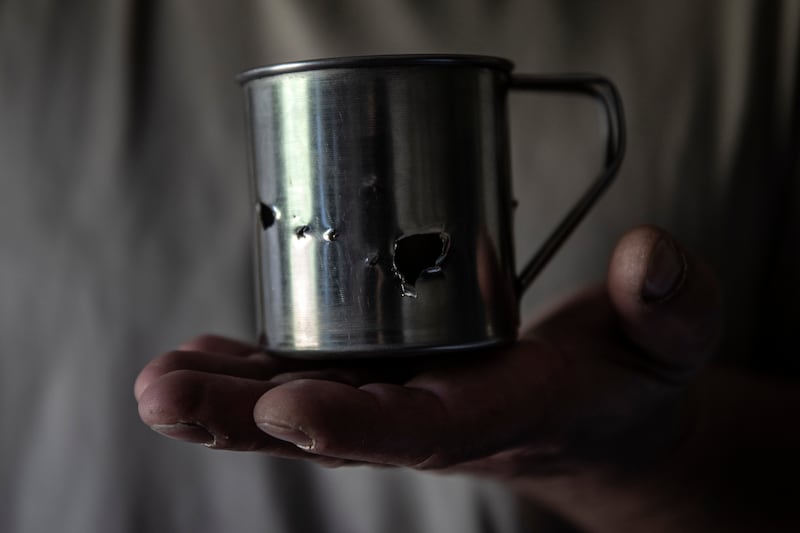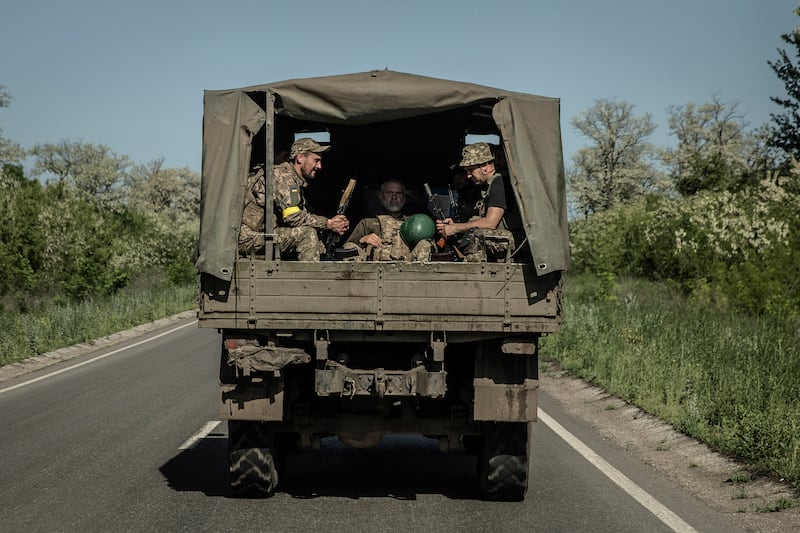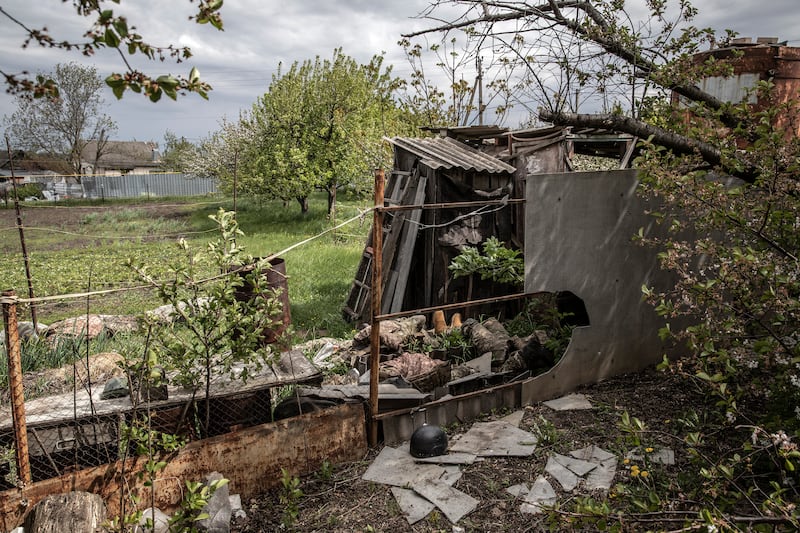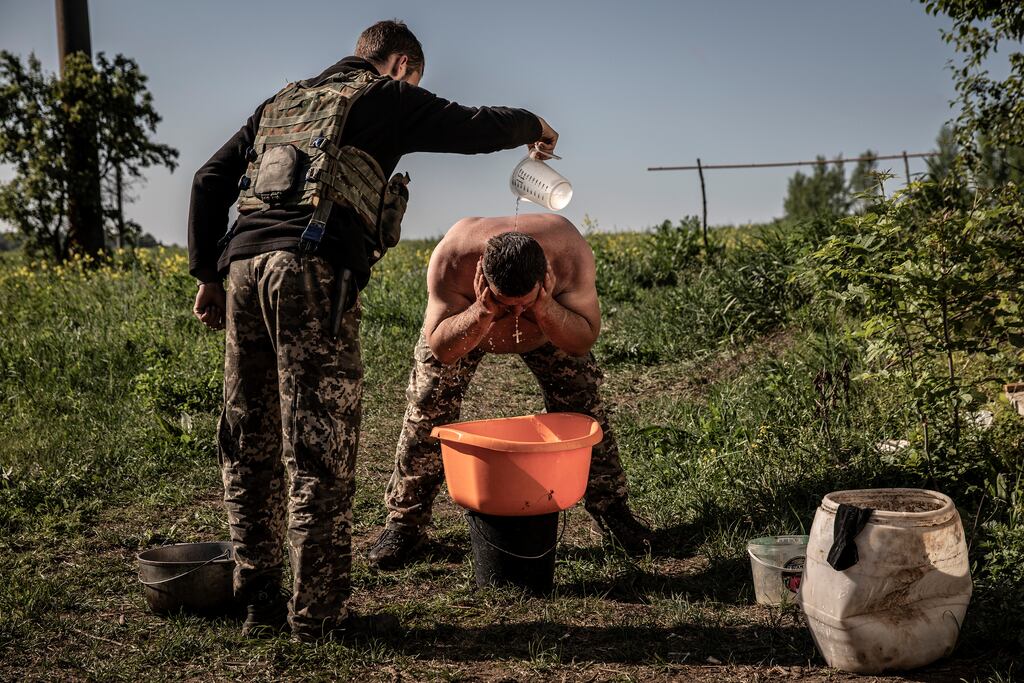Nearly 600 graves stretch to the edges of the military cemetery outside the city of Dnipro, marked by ranks of yellow-and-blue Ukrainian flags snapping in the wind.
The graves represent just a small percentage of the thousands of Ukrainian soldiers who have died in eight years of war since Russia first began to annex parts of their country in 2014, but the rapid expansion of this graveyard in eastern Ukraine is telling.
Almost half the graves are fresh. Draped in wreaths of artificial flowers or marked with a wooden cross stuck in the bare mud, they belong to soldiers killed in the last three months, since Russia began its large-scale invasion of Ukraine.
“There would not be anything here at all, if they had not come,” Viktoria Martynova said of the Russians. “We did not attack anyone. We were living in our own country, in our homes, on our own land.”
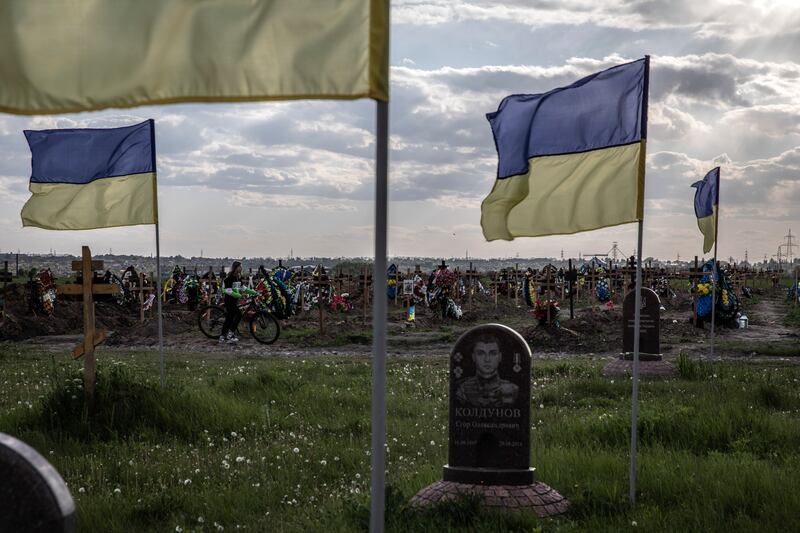
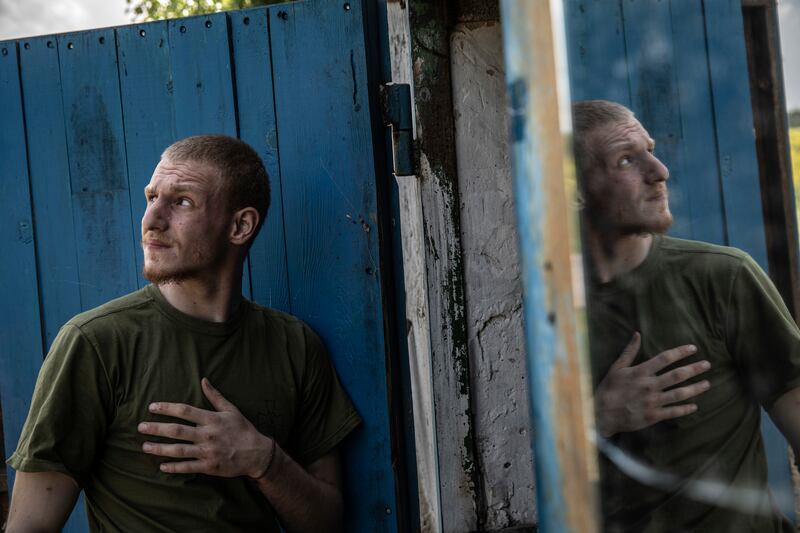
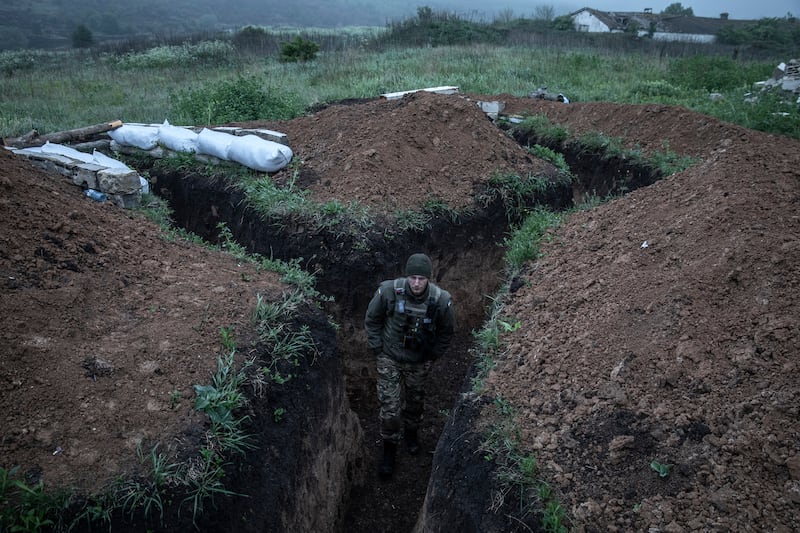
Her husband, Oleksiy Martynov, an electrician, lies in one of the new graves. He enlisted on the first day of the war and was killed in a mine explosion near the Russian border in April, barely six weeks later.
The number of Ukrainian casualties remains a closely guarded secret. The media-conscious government of president Volodymyr Zelenskiy has carefully controlled the flow of information in an apparent attempt to keep public morale high. Hospitals and military officials are forbidden from disclosing casualty numbers. Reporters are generally not permitted to visit the front line in Ukraine, and photographs and videos showing wounded and dead soldiers are rare.
Yet with Russian artillery pounding its forces in the east, Ukraine is seeing casualties mount at such a rate that last week president Zelenskiy said the army was losing 60-100 soldiers a day, and for the first time visited troops on the front lines.
For the men at the front, the strain is visible: in the dead-tired eyes of a police chief after another day leading his men in a bombarded city; in the blank stare of a commander who had just lost one of his best soldiers; and in the tense look of a group of soldiers heading for the first time to ground zero, as they call the frontline trenches.
Those soldiers are facing perhaps the most gruelling weeks and months of the war as they try to stem, and survive, the Russian onslaught.
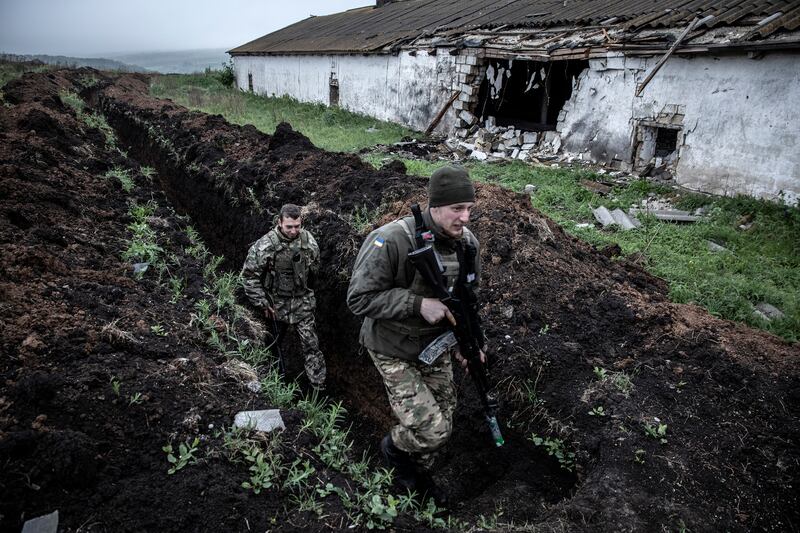
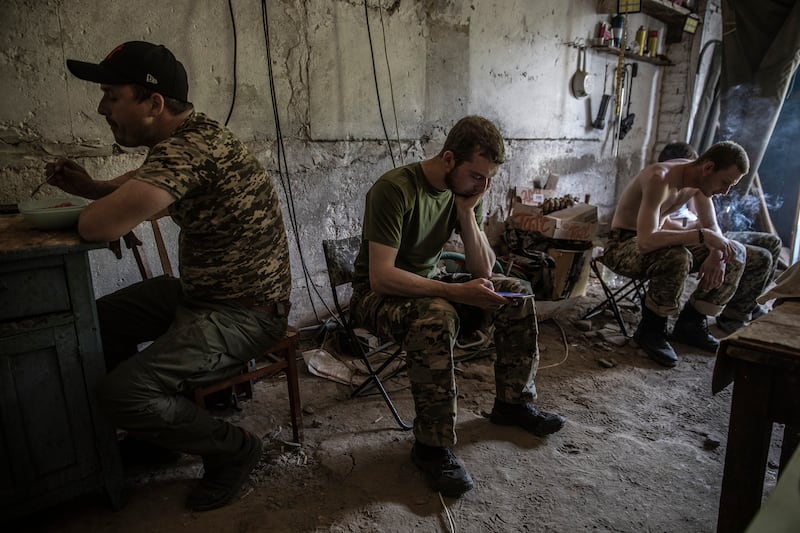
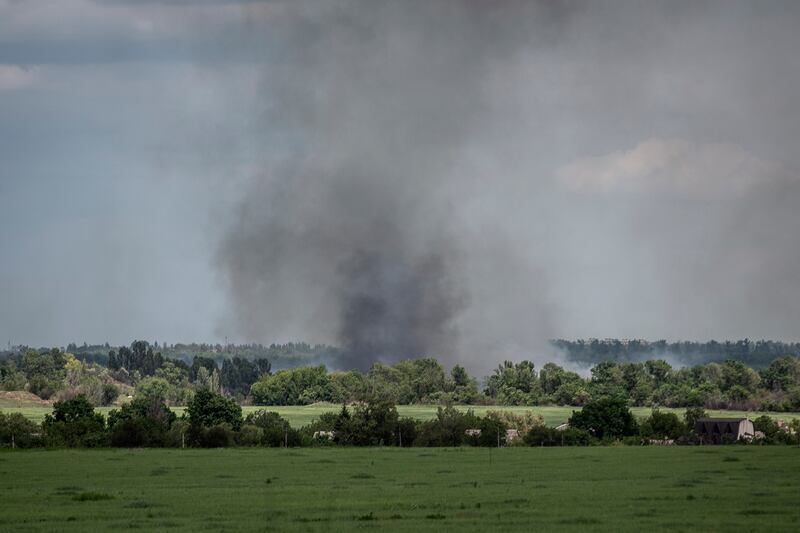
The nature of the fight has changed for the Ukrainians from up-close urban fighting and hit-and-run attacks on Russian armoured columns around Kyiv, at which they excelled, to long-distance artillery battles and air strikes on the eastern front, where Russia’s superior firepower gives it the upper hand.
Soldiers who served in the trenches last week near the village of Dovhenke, near the contested region of Donetsk, described hiking to positions and digging in as tank shells, mortars and cluster bombs landed around them.
“We were digging in on our knees and in the mud because it was raining,” said Samara, 48, the deputy leader of a unit who has completed five rotations on the front line. Like most soldiers, he asked to be identified by his code name for security reasons.
“The last 48 hours, we did not have moment of silence,” he said.
A tank blasted at their positions for five hours, then Russian infantry began an assault on foot, he said. Ukrainian snipers stalled the infantry advance and soldiers managed to lay a mine in the tank’s path, but the men in the trenches could do little but wait it out, he said.
“When a tank is firing you have to hide,” he said. “It’s a difficult situation.” His tin cup was punctured with several shrapnel holes. “I left it outside the trench,” he said, laughing. “I did not lift my head to see how it happened.”
Soldiers who served in the trenches last week near the village of Dovhenke, near the contested region of Donetsk, described hiking to positions and digging in as tank shells, mortars and cluster bombs landed around them.
Several soldiers said one of the hardest parts was digging in.
“We only had one spade, and it was not very good,” said a 19-year-old soldier who uses the code name Air. At first things were quiet, so the men sat around joking and smoking as if on a camping excursion, he said.
They had dug a shallow trench, enough to lie in, but when the shelling started it proved barely enough. “The only thing you think about is why we dug so little,” he said. “We did not panic but my heart was beating so fast.”
Mortars and cluster bombs landed as close as 10 or 15 metres away, he said. “When you lift your head, you understand you are in a fog and you smell the gunpowder.”
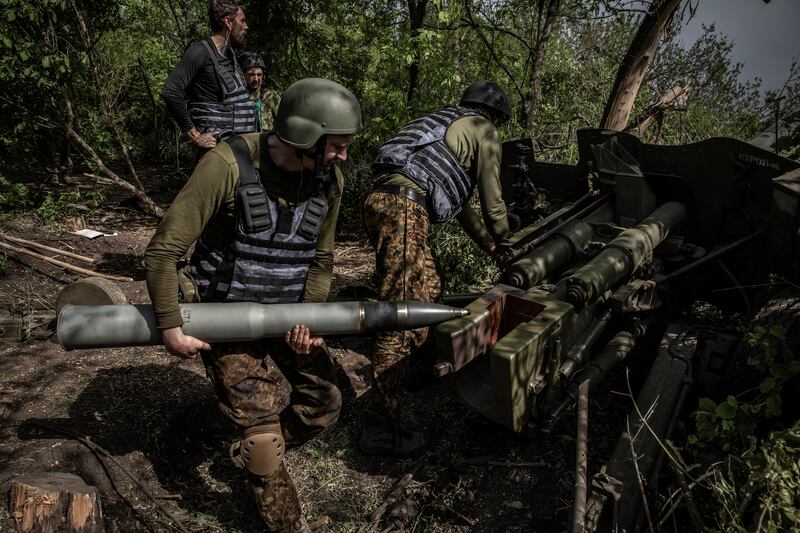
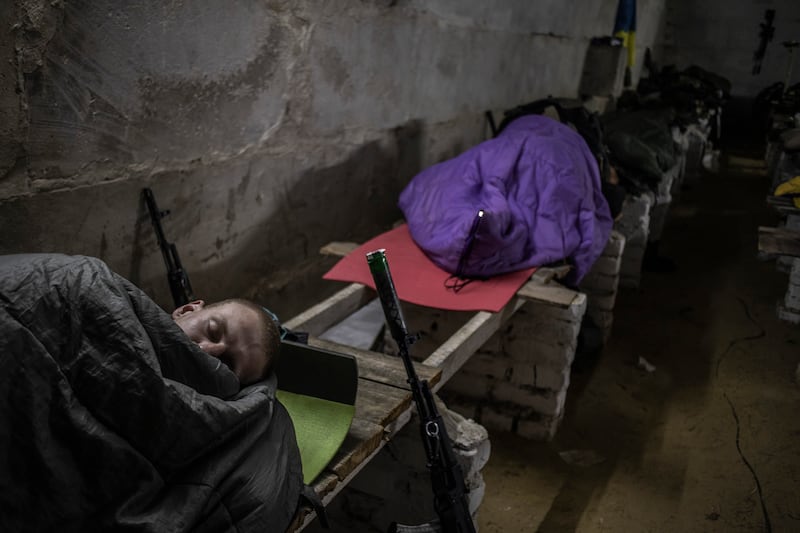
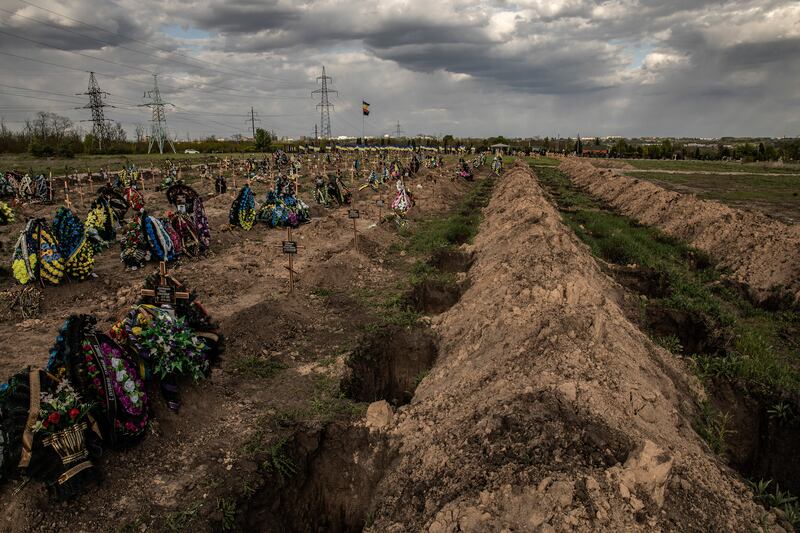
One soldier, Vadym Melnyk, 40, who holds a doctorate in economics and teaches at Kyiv University, said he was disappointed not to see any evidence of western-supplied weapons during his first rotation at the front last week.
“Unfortunately, I didn’t see any,” he said after his return. “And that place now is one of the most difficult on the front.”
Tasked with holding positions against a Russian attack, the unit was armed only with Soviet-made assault rifles and anti-tank weapons, he said. They did not even have American-made Javelin missiles, which have been sent in large numbers to Ukraine, he said.
The Russians, he said, had much greater firepower, including multiple rocket launcher systems, tanks and big-calibre guns. “They used everything they had,” he said. “They were firing at us without any problems.”
He said he was troubled that, for two days, their unit was under fire from the same Russian mortar position but Ukrainian artillery forces did not seem to do anything to knock it out.
Planes dropped cluster bombs overhead but, luckily for the unit, the canister opened at some distance away and the bomblets did not reach their positions, Melnyk said. He also said he saw white phosphorus dropped in the woods near their positions. It looked like a firework salute, he said, adding that a soldier in a friend’s unit had lost his sight from horrific burns.
The fighting at Dovhenke, which lies south of the town of Izyum, has been particularly intense in recent weeks as Russian forces punched their way south in a move to seize the last part of the Luhansk region. Russian forces captured the village at the end of May and have continued pushing toward the town of Sloviansk.
Air strikes remain persistently devastating, and Ukraine seems to have little defence against them, commanders and soldiers said. One soldier said his regiment lost 28 men in one night of bombardment by Russian jets last week.
Yet those who survive a close call said it inspired a greater determination. No one was ready to quit in his unit, Melnyk said.
“Everyone stayed until the end of the rotation,” he said. The group included 19- and 20-year-olds, and men in their 50s, including a former convict and men with doctorates. “It’s such a crazy mix but everyone feels the same — we must be there, we must fight and we must win.”
He was aware of the mounting casualties, he said, but the Russians lost men, too.
“If you want to win you should fight,” he said. “We don’t have another way.”
— This article originally appeared in the New York Times
